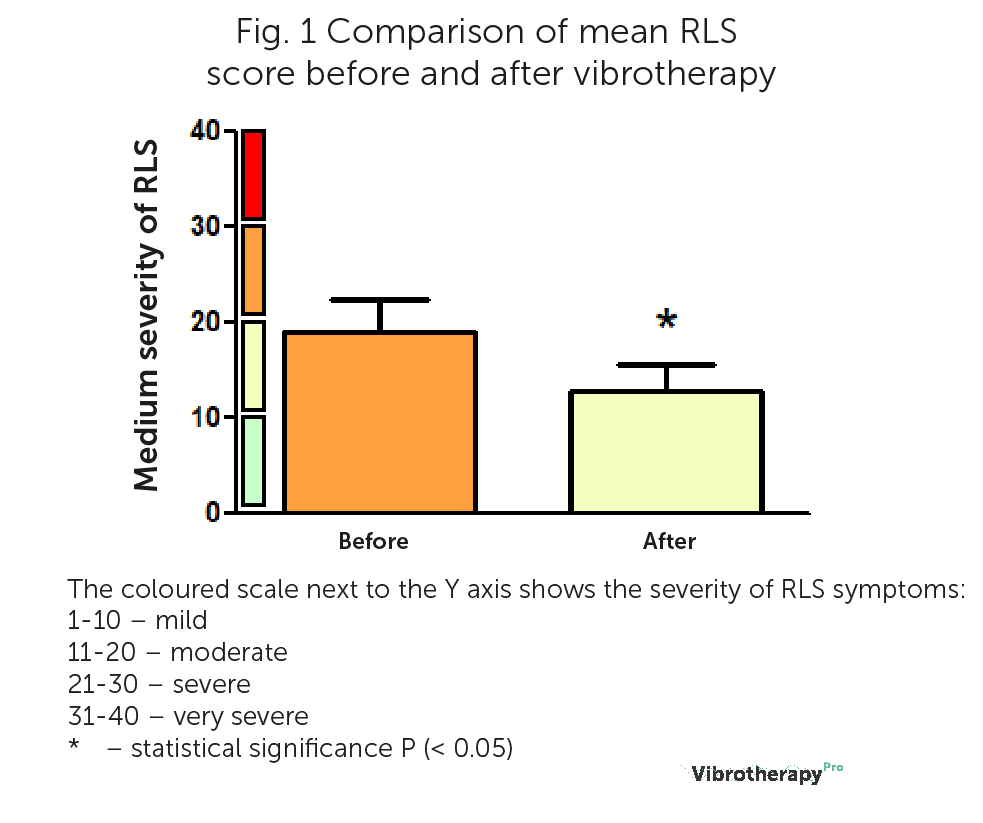Effect of vibrotherapy on symptoms of restless legs syndrome in haemodialysis patients
Restless legs syndrome (RLS) is a neurological disorder that can occur in patients on haemodialysis. The occurrence of RLS interferes with sleep and rest, consequently leading to reduced functionality, interference with work activities and family life. Therefore, Iranian researchers investigated the effect of vibrotherapy – a physical therapy method that affects the neuromuscular system – on the severity of RLS symptoms in haemodialysis patients.
- Before vibrotherapy treatments, 31.2 % of the patients presented severe RLS symptoms, with the remaining 68.8 % presenting moderate symptoms. After 4-week vibrotherapy, severe RLS severity was no longer observed, with 78.8% of patients presenting moderate RLS symptom severity and 16.2% presenting mild RLS symptoms (5% of patients did not complete the study).
- Before vibrotherapy, the mean RLS severity was 18.99 ± 3.29, after vibrotherapy 12.82 ± 2.73 – the observed decrease was statistically significant (Fig. 1).

Compiled from:

The effect of vibration on the severity of restless legs syndrome in hemodialysis patients. Hosseini H, Kazemi M, Azimpour S. J Renal Inj Prev. 2016 Nov 21;6(2):113-116.
Study population
The study was conducted on 76 haemodialysis patients with RLS (mean age: 61.4 years; 57.5% of patients were male), meeting strict criteria.
Study procedure
The study did not use a control group; all patients were analysed before vs after vibrotherapy. The RLS severity questionnaire (based on international RLS standards) was completed before the study and on the last day of vibrotherapy: before and after the last treatment. RLS symptom severity was divided into five categories based on the results obtained:
0 = no symptoms,
1-10 = mild severity,
11-20 = moderate,
21-30 = severe,
31-40 = very severe
Use of vibration in the study
Vibration was administered to the calves using a Thrive Model 717 A – at low voltage. A single treatment lasted 10 minutes. Three treatments per week were performed, during haemodialysis, for 4 consecutive weeks.
Results
Prior to vibrotherapy treatments, 31.2% of patients presented severe RLS symptoms and the remaining 68.8% presented moderate symptoms. After 4-week vibrotherapy, severe RLS severity was no longer observed, with 78.8% of patients presenting moderate RLS symptom severity and 16.2% presenting mild RLS symptoms (5% of patients did not complete the study).
The mean RLS severity score was 18.99 ± 3.29 before vibrotherapy and 12.82 ± 2.73 after vibrotherapy. The observed decrease was statistically significant (P = 0.001; fig.1).
Comment
The presented results indicate that therapeutic vibration leads to a significant reduction in the severity of RLS symptoms in haemodialysis patients. Therefore, the authors recommend the use of vibration therapy as an inexpensive and safe procedure to alleviate RLS symptoms.
More in:


